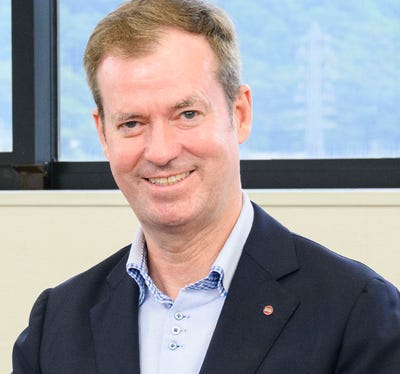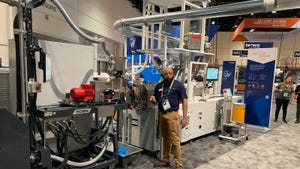South Korea’s Dongshin reemerges in global market for injection machines
After lengthy hiatus, supplier believes it now has what it takes to compete with Japanese and European machines
March 14, 2017

For many years, South Korean injection molding machine manufacturer Dongshin Hydraulics disappeared from the global market. This was a conscious effort on behalf of the machine builder as it came to the conclusion that it with its existing product portfolio of hydraulic and electric machines, it could neither compete with up-and-coming Chinese OEMs, nor established Japanese and European players that dominated the high end of the market. The company realized that its machines were priced higher yet its technology had become stagnant.
|
Dongshin’s Kim: Redesign from the ground up and control of software aspects key to success of new machines. |
|
New RB Series of electric machines builds on development of GB Series targeting global market. |
Seven years ago, under new CEO B.G. (Phillip) Kim, Dongshin departed on a journey to bridge the gap and compete in the high end of the market. Cue the development of the GB (Great Birth) Series of full electric injection molding machines from the ground up. The series debuted in 2014 under a new Dongshin logo: DS, or Different Specialty.
The GB Series was fully tested in the Korean market, where Dongshin delivered 60 machines, before international marketing efforts got underway at Chinaplas 2016 in Shanghai and K 2016 in Düsseldorf. “The feedback from molders was that our machines were competitive despite their pricing,” Kim recalls. “They were now comparing our CE Mark machines to European and Japanese machines and no longer associating them with Chinese machines.”
At the recent Koplas Show in Goyang, debuted the RB (Rebirth) Series of electric machines for the Korean market, featuring an 8% smaller footprint than the GB Series. “We learnt from our experience with the GB Series that the machine footprint was just too big for many local processors,” says Kim.
As with the GB Series, the new machines a more rigid machine body for high-speed operation, yet are over 15% quieter than hydraulic machines. Energy savings of 86% over standard hydraulic machines and 21% compared with servo-hydraulic machines are claimed, while positional precision is +0.01 mm and repeatability within 0.1%.
Dongshin also debuted the PL Series of servo-hydraulic machines at Koplas. Molding microparts at the show, the machines feature a controller and software developed in-house. “Without control over this aspect of the machine, you will never get the required precision,” says Kim. “Most Korean machine builders only care about the machine itself and purchase software and controllers externally,” says Kim. “We develop our own PLCs are have control over the software and controller design.”
The machine builder is also paying attention to minor detail in its machines, such as employing rubber level pads to absorb machine vibration, and supplying steel containers or “purge pots” to keep machines clean during material changes. “We’ve even developed a collapsible machine-top warning light so that it’s never damaged in transit,” says Kim. He believes this attention to detail be a key element in market success moving forward.
Dongshin has also developed a remote monitoring system for its injection machines. Conper is Dongshin’s take on Industry 4.0. Both users and Dongshin engineers can monitor machines remotely on smartphones and computers. “This gives us access to machine data and is accumulating such big data to help it analyze machine operation and build on this to optimize its machines,” says Kim. “It also enables preventative maintenance. Our technicians can see the machines without being there.”
The company recently completed a new factory in Busan, South Korea, that tripled its machine building capacity from 500 to 1500 machines. A new technical center and training center were also completed. Dongshin plans to export 70% of its production from the new facility. Although South Korea is a $400 million market for injection machines, the majority of electronics production has migrated offshore to Vietnam and elsewhere in Asia, with medical devices and cosmetic packaging emerging as local growth markets.
About the Author(s)
You May Also Like





